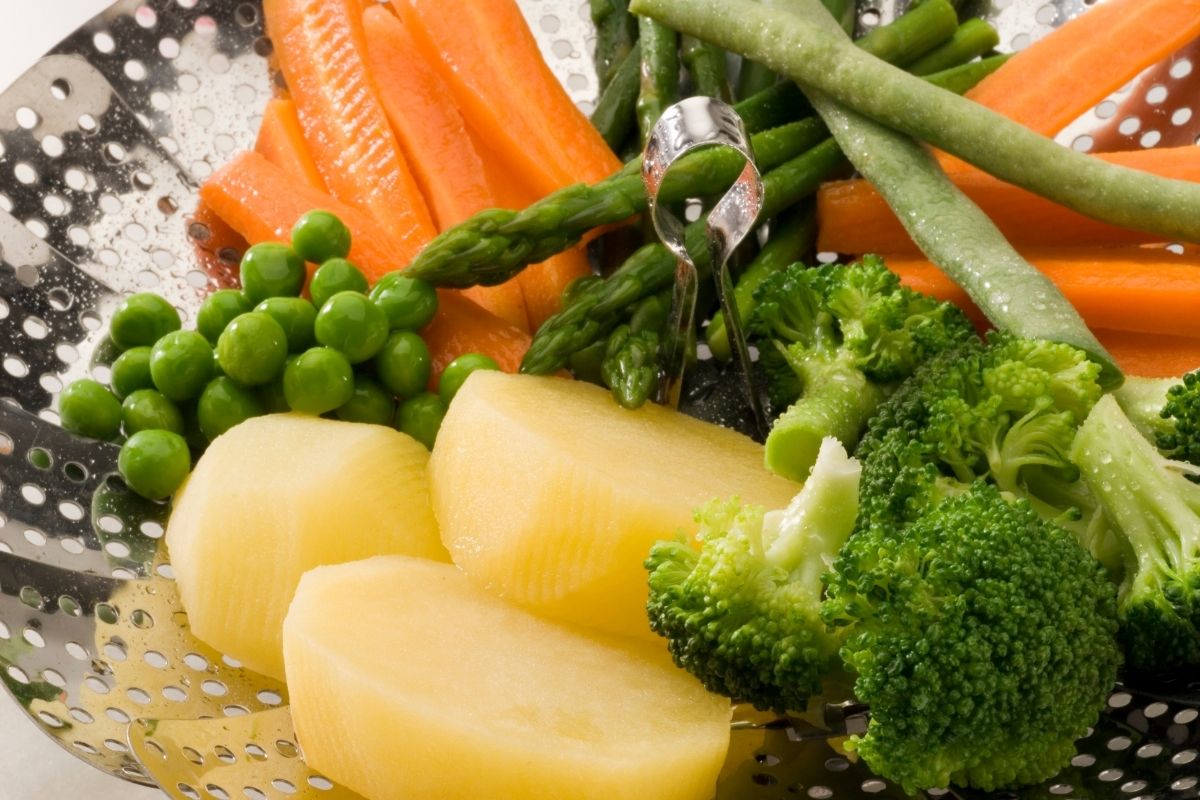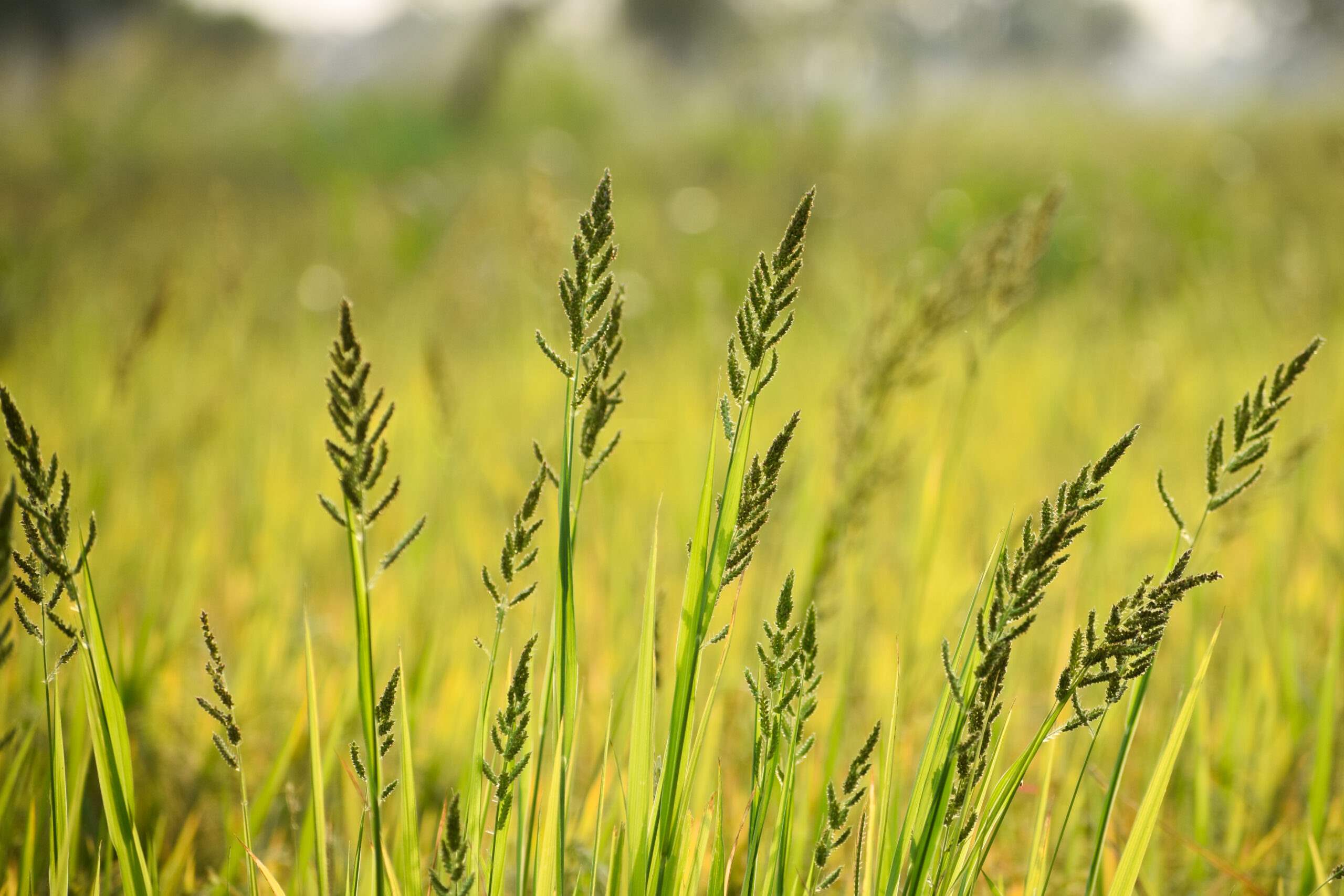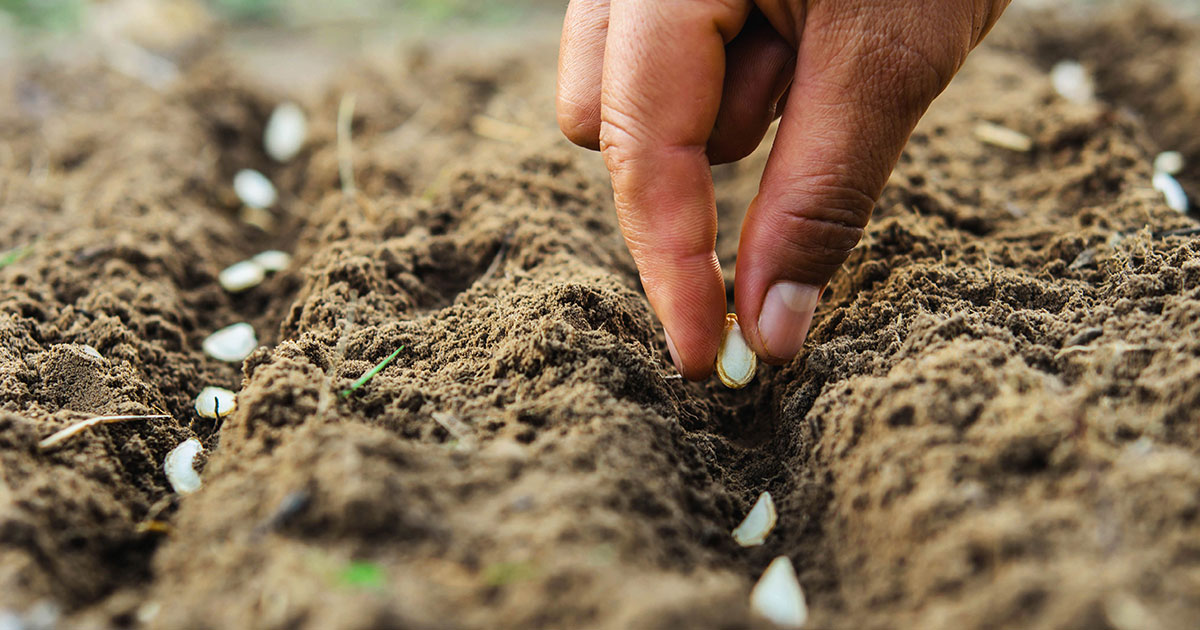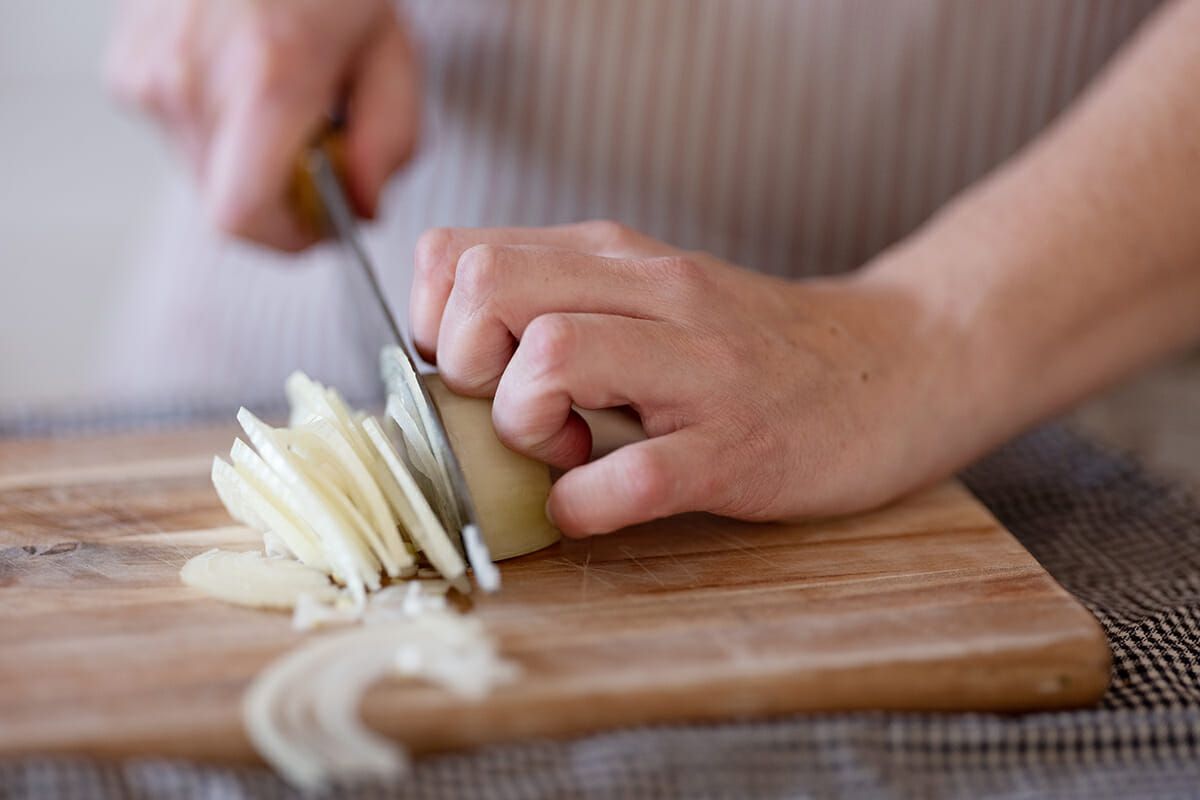Home>Gardening News and Trends>Latest News>How To Steam Vegetables In A Rice Cooker


Latest News
How To Steam Vegetables In A Rice Cooker
Published: October 10, 2023
Learn the latest news on how to steam vegetables in a rice cooker and enjoy healthy meals in no time! Discover easy methods and delicious recipes.
(Many of the links in this article redirect to a specific reviewed product. Your purchase of these products through affiliate links helps to generate commission for Chicagolandgardening.com, at no extra cost. Learn more)
Table of Contents
- Introduction
- Benefits of Steaming Vegetables in a Rice Cooker
- Choosing the Right Vegetables for Steaming
- Preparing the Rice Cooker for Steaming
- Step-by-Step Guide on Steaming Vegetables in a Rice Cooker
- Tips for Perfectly Steamed Vegetables
- Variations and Flavoring Options for Steamed Vegetables
- Cleaning and Maintaining Your Rice Cooker after Steaming Vegetables
- Conclusion
Introduction
Steaming vegetables is a healthy and convenient way to preserve their natural flavors and nutrients. While traditional methods require a separate steamer and stovetop, many people overlook the fact that their rice cooker can also serve as a practical and efficient tool for steaming vegetables. In this article, we will explore the benefits of steaming vegetables in a rice cooker and provide a step-by-step guide on how to achieve perfectly steamed vegetables every time.
Steaming vegetables has gained popularity in recent years due to its numerous health benefits. Steaming helps to retain the vitamins and minerals that can be lost through boiling or frying. By using a rice cooker for steaming, you can take advantage of its automatic temperature control and timer functions, allowing you to set it and forget it while your vegetables cook to perfection.
Another advantage of using a rice cooker for steaming vegetables is its versatility. Rice cookers come in different sizes and features, making it suitable for small or large amounts of vegetables. Whether you’re cooking for yourself or for a family, a rice cooker can accommodate your needs.
This method of steaming is also time-saving. Unlike traditional stovetop steaming, where you need to keep a close eye on the pot, a rice cooker allows you to multitask while your vegetables steam. You don’t have to worry about the water boiling over or the veggies overcooking, as the rice cooker automatically switches to a warm setting after cooking.
In the next section, we will discuss the different vegetables that are perfect for steaming and how to choose the best ones for your dish.
Benefits of Steaming Vegetables in a Rice Cooker
Steaming vegetables in a rice cooker offers numerous benefits that make it a preferred method for many home cooks. Here are some of the key advantages:
- Healthier Cooking Method: Steaming vegetables retains more nutrients compared to other cooking methods like boiling or frying. The gentle steam helps to preserve the vitamins, minerals, and natural flavors of the vegetables, ensuring you get the most out of your meal.
- Convenience and Ease: Using a rice cooker for steaming is incredibly convenient. Once you have set the timer and temperature, you can simply walk away and attend to other tasks while your vegetables steam to perfection. There is no need to constantly monitor the cooking process, giving you more time and flexibility in the kitchen.
- Consistent Results: Rice cookers are designed to provide even heat distribution, resulting in consistent cooking results. This means that your vegetables will be cooked evenly, eliminating the risk of undercooked or overcooked sections. You can expect your vegetables to be tender and flavorful every time.
- Preservation of Texture: Steaming vegetables in a rice cooker helps to maintain their crispness and texture. Unlike boiling, which can make some vegetables mushy, steaming allows them to retain a pleasant crunch while still being cooked through. This is particularly beneficial for vegetables like broccoli, cauliflower, and green beans.
- No Additional Equipment Needed: Many people already own a rice cooker, as they are a staple in kitchens around the world. By utilizing your rice cooker for steaming, you eliminate the need for additional equipment like a steamer basket or a separate pot. This saves both space and money.
- Versatile Cooking: Steaming vegetables in a rice cooker allows you to easily incorporate them into a variety of dishes. Whether you want to add steamed vegetables to salads, stir-fries, or as a side dish, the possibilities are endless. The gentle cooking method also allows the flavors of the vegetables to shine through, enhancing any meal.
Now that we understand the benefits of steaming vegetables in a rice cooker, let’s move on to discussing how to choose the right vegetables for steaming in the next section.
Choosing the Right Vegetables for Steaming
When it comes to steaming vegetables in a rice cooker, choosing the right vegetables is essential to ensure the best results. Here are some key factors to consider when selecting vegetables for steaming:
- Firmness and Texture: Opt for vegetables that have a firm texture and will hold their shape well during steaming. Examples include broccoli, cauliflower, carrots, asparagus, green beans, Brussels sprouts, and zucchini. These vegetables retain their crispness and texture when steamed, resulting in a more enjoyable eating experience.
- Size and Thickness: Consider the size and thickness of the vegetables. Smaller and thinner vegetables may require less steaming time, while larger and thicker ones may need more. It is essential to cut the vegetables into uniform sizes to ensure even cooking. This will prevent some pieces from being undercooked while others are overly soft.
- Color and Nutrition: Incorporating a variety of colorful vegetables into your steaming repertoire not only adds visual appeal to your dish but also ensures a diverse range of nutrients. Vibrant vegetables like bell peppers, carrots, and broccoli are packed with vitamins, minerals, and antioxidants, making them excellent choices for steaming.
- Seasonality: Fresh, seasonal vegetables are the best choice for steaming. They are likely to be more flavorful, nutritious, and affordable compared to out-of-season produce. Check your local farmer’s market or grocery store for the freshest options available.
- Taste Preferences: Consider your personal taste preferences when selecting vegetables. Some people prefer milder flavors, such as cauliflower and zucchini, while others enjoy more robust flavors, like Brussels sprouts and asparagus. Choose vegetables that you and your family enjoy eating to make your steamed dishes more appealing.
By taking these factors into account, you can ensure that the vegetables you choose are well-suited for steaming in a rice cooker. In the next section, we will discuss how to prepare your rice cooker for steaming.
Preparing the Rice Cooker for Steaming
Before you start steaming vegetables in your rice cooker, it’s important to properly prepare the appliance to ensure optimal results. Follow these steps to get your rice cooker ready for steaming:
- Clean the Rice Cooker: Begin by cleaning the inner pot of your rice cooker to remove any residue or debris. Wash it thoroughly with warm, soapy water, or follow the manufacturer’s instructions for cleaning the pot. Rinse it well and dry it completely before proceeding.
- Setup the Steaming Basket: Most rice cookers come with a steaming basket or rack specifically designed for steaming vegetables. Ensure that the basket is clean and free from any food particles. If your rice cooker doesn’t come with a steaming basket, you can use a heatproof metal or bamboo steamer basket that fits inside the pot.
- Add Water: Fill the rice cooker with an appropriate amount of water according to the manufacturer’s instructions. The amount of water required may vary based on the specific model of your rice cooker. It is typically recommended to add enough water to reach just below the bottom of the steaming basket.
- Assemble the Vegetables: Arrange the prepared vegetables in the steaming basket. Be mindful not to overcrowd the basket, as this can impede proper steaming. If you have a variety of vegetables with different cooking times, you may need to adjust the placement accordingly, ensuring that the faster-cooking vegetables are closer to the top.
- Place the Steaming Basket: Carefully place the steaming basket with the vegetables into the rice cooker, ensuring it is positioned securely. Close the lid of the rice cooker firmly to create a tight seal, allowing the steam to circulate and cook the vegetables evenly.
- Select the Steaming Setting: Depending on the model of your rice cooker, there may be a specific setting for steaming. Select the appropriate steaming setting, or if your rice cooker doesn’t have one, choose the regular cooking function. Adjust the timer to the desired cooking time for the vegetables you are steaming. Consult the cooking chart provided by the rice cooker manufacturer or reference a steaming vegetables guide for approximate cooking times.
- Start the Steaming Process: Once you have set the correct settings and timer, press the start button to initiate the steaming process. The rice cooker will begin to heat up and generate steam, which will cook the vegetables.
Now that your rice cooker is prepared for steaming, you can follow the step-by-step guide to steam the vegetables, which we will discuss in detail in the next section.
Step-by-Step Guide on Steaming Vegetables in a Rice Cooker
Steaming vegetables in a rice cooker is a straightforward process that yields delicious and nutritious results. Follow these step-by-step instructions to steam vegetables in your rice cooker:
- Prepare the Rice Cooker: Clean the rice cooker and assemble the steaming basket or rack. Add the appropriate amount of water to the rice cooker, ensuring it reaches just below the bottom of the steaming basket.
- Prep the Vegetables: Wash the vegetables thoroughly and trim them if necessary. Cut them into uniform sizes to ensure even cooking. Remember to consider the cooking times of different vegetables if you are steaming a variety.
- Arrange the Vegetables: Place the prepared vegetables in the steaming basket, ensuring they are evenly spaced and not overcrowded. If necessary, steam vegetables with longer cooking times first and add quicker-cooking vegetables later.
- Cover and Start Steaming: Place the steaming basket with the vegetables into the rice cooker. Close the lid firmly to create a tight seal. Select the appropriate steaming setting if available or choose the regular cooking function. Set the timer according to the cooking times of the vegetables.
- Monitor and Adjust: Keep an eye on the progress of the steaming process through the clear lid of the rice cooker. If you find that the vegetables are not cooking evenly or need more time, you may open the lid and adjust the positioning of the vegetables as necessary.
- Check for Doneness: After the set cooking time, carefully open the lid of the rice cooker and check the doneness of the vegetables. They should be tender yet still retain a slight crispness. If they need more cooking time, you can continue steaming for a few more minutes.
- Remove and Serve: Once the vegetables are cooked to your desired doneness, carefully remove the steaming basket from the rice cooker, using oven mitts or tongs to avoid burning yourself. Serve the vegetables immediately while they are still hot and flavorful.
By following these simple steps, you can enjoy perfectly steamed vegetables using your rice cooker. In the next section, we will provide some useful tips to achieve optimal results when steaming vegetables.
Tips for Perfectly Steamed Vegetables
Steaming vegetables in a rice cooker can yield delicious and tender results with just the right amount of crunch. Here are some tips to help you achieve perfectly steamed vegetables every time:
- Consistent Sizing: Cut your vegetables into uniform sizes to ensure even cooking. This will help prevent some pieces from being undercooked while others are overcooked.
- Proper Water Level: Pay attention to the water level in the rice cooker. Make sure it doesn’t completely evaporate during the steaming process. If needed, you can add more hot water to the rice cooker to prevent it from drying out.
- Steaming Time: Different vegetables have varying cooking times. Be mindful of the recommended cooking times for each type of vegetable to avoid undercooking or overcooking. Refer to a steaming vegetables guide or the manufacturer’s instructions for approximate cooking times.
- Testing for Doneness: To check if the vegetables are cooked to your desired doneness, you can pierce them with a fork or toothpick. They should offer some resistance but still be tender. Avoid overcooking, as this can lead to mushy vegetables.
- Seasoning: While steamed vegetables can be delicious on their own, consider adding some flavor by seasoning them. You can lightly drizzle them with olive oil, sprinkle them with herbs or spices, or add a squeeze of lemon juice for a refreshing zing.
- Steaming Without a Basket: If your rice cooker doesn’t come with a steaming basket, you can still steam vegetables using a heatproof metal or bamboo steamer basket that fits inside the pot. Alternatively, you can use a heatproof bowl or plate and place it on a small stand or ring, ensuring the vegetables are above the water level.
- Adding Aromatics: For extra flavor, consider adding aromatic ingredients like garlic, ginger, or herbs to the water in the rice cooker. As the vegetables steam, they will absorb these aromatic flavors, enhancing the overall taste of the dish.
- Staggering Cooking Times: If you are steaming a variety of vegetables with different cooking times, start with the vegetables that require more time and add the quicker-cooking vegetables later. This will ensure that all the vegetables are cooked to perfection.
By following these tips, you can create perfectly steamed vegetables that are flavorful, vibrant, and retain their nutritional value. In the next section, we will explore some variations and flavoring options to elevate your steamed vegetable dishes.
Variations and Flavoring Options for Steamed Vegetables
While steamed vegetables are delicious on their own, adding some variations and flavorings can take them to new levels of taste and appeal. Here are a few ideas to enhance your steamed vegetable dishes:
- Sauce Glaze: Drizzle your steamed vegetables with a flavorful sauce or glaze. Consider options like soy sauce, teriyaki sauce, honey mustard, or balsamic glaze. Toss the vegetables gently in the sauce just before serving to add a delicious coating and an extra burst of flavor.
- Herb Infusion: Add fresh herbs like basil, parsley, cilantro, or dill to your steaming water before cooking the vegetables. As the steam rises, it will infuse the vegetables with delicate herbal aromas and flavors.
- Vinaigrette Dressing: Toss steamed vegetables with a tangy vinaigrette dressing made from olive oil, vinegar (such as balsamic or apple cider vinegar), Dijon mustard, and a touch of honey or maple syrup. The dressing will add brightness and a zingy taste to the vegetables.
- Citrus Zest: Sprinkle freshly grated citrus zest, such as lemon, lime, or orange, over your steamed vegetables. The bright, aromatic flavors will complement the natural sweetness of the vegetables and add a refreshing twist.
- Spice Blend: Add a pinch of spices to your steamed vegetables for an extra kick. Consider options like garlic powder, cumin, paprika, chili flakes, or curry powder. Be mindful of the flavors of the vegetables and choose spices that will complement them.
- Crunchy Toppings: Sprinkle some crunchy toppings over your steamed vegetables just before serving for added texture. Consider options such as toasted sesame seeds, slivered almonds, crushed croutons, or crispy fried onions.
- Cheese Melting: For a rich and indulgent twist, top your steamed vegetables with a sprinkle of your favorite cheese. Place the vegetables back in the warm rice cooker for a few minutes to allow the cheese to melt and create a gooey, savory topping.
- Using Flavorful Broths: Instead of plain water, steam your vegetables using flavorful vegetable or chicken broth. This will infuse the vegetables with a savory undertone and enhance their overall taste.
Feel free to experiment with different flavor combinations and find your favorite variations for steamed vegetables. These additions will add depth, complexity, and excitement to your dishes. In the next section, we will discuss the importance of cleaning and maintaining your rice cooker after steaming vegetables.
Cleaning and Maintaining Your Rice Cooker after Steaming Vegetables
Properly cleaning and maintaining your rice cooker after steaming vegetables not only ensures its longevity but also keeps your rice cooker in optimal condition for future use. Here are some essential steps to follow:
- Unplug and Cool Down: Before cleaning your rice cooker, make sure to unplug it from the power source and allow it to cool down. This will help prevent any accidental burns.
- Empty and Discard Water: Pour out any remaining water from the rice cooker once you have finished steaming. Dispose of it and ensure the inner pot is empty and ready for cleaning.
- Remove and Clean the Steaming Basket: If your rice cooker has a removable steaming basket, detach it and wash it with warm, soapy water. Scrub away any residue or stuck-on food particles, then rinse it well. Make sure the steaming basket is completely dry before storing it.
- Clean the Inner Pot: Wash the inner pot of the rice cooker with warm, soapy water, using a soft sponge or cloth. Pay attention to any food residue that may have accumulated during the steaming process. Rinse the pot thoroughly and dry it before reassembling the rice cooker.
- Clean the Lid and Exterior: Wipe the lid and exterior of the rice cooker with a damp cloth or sponge. Avoid using abrasive cleaning agents or scouring pads, as they may cause damage to the surface. Dry the lid and exterior thoroughly to prevent any moisture from accumulating.
- Remove Lingering Odors: If there are any lingering food odors in the rice cooker, you can remove them by placing a mixture of water and vinegar in the inner pot and running a cooking cycle. The vinegar will help eliminate the odors, leaving your rice cooker fresh and clean.
- Store Properly: Once the rice cooker is cleaned and completely dry, reassemble all the parts and store them in a dry and well-ventilated place. Avoid leaving any moisture in the rice cooker, as it can lead to mold or bacteria growth.
- Regular Maintenance: To keep your rice cooker in optimal condition, it is recommended to periodically check for any signs of wear or damage. Follow the manufacturer’s instructions for any maintenance tasks specific to your rice cooker model.
By following these steps and maintaining your rice cooker properly, you can ensure its longevity and continue to enjoy perfectly steamed vegetables for years to come. Now, let’s conclude our article with a recap of the key takeaways.
Conclusion
Steaming vegetables in a rice cooker is a simple and effective method that allows you to enjoy delicious, tender, and nutritious dishes. By utilizing your rice cooker, you can take advantage of its convenience, versatility, and precise temperature control. Steaming vegetables preserves their natural flavors and essential nutrients, providing you with a healthy and satisfying meal option.
We have explored the benefits of steaming vegetables in a rice cooker, including its health advantages, time-saving capabilities, and consistent results. Choosing the right vegetables for steaming is crucial for achieving optimal texture and taste. Remember to select vegetables with firmness, vibrant colors, and complimentary flavors.
To steam vegetables in your rice cooker, properly prepare the appliance by cleaning it and setting up the steaming basket. Follow a simple step-by-step guide to ensure excellent results every time. Use our tips to enhance the flavor of your steamed vegetables, ranging from sauce glazes to aromatic herbs and crunchy toppings.
After steaming, take the time to clean and maintain your rice cooker. Proper cleaning and storage will keep your appliance in pristine condition for future use. Regular maintenance will help prolong its lifespan and ensure its efficiency.
Incorporating steamed vegetables into your daily meals not only adds variety but also provides a range of health benefits. So, grab your favorite vegetables, fire up your rice cooker, and start steaming your way to delicious and nutritious dishes. Enjoy!






